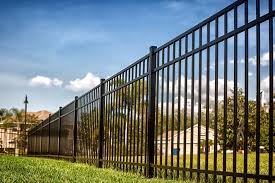Past their useful utility, fences keep powerful symbolic relevance in human communities, which represents ideas of acquisition, identity, and interpersonal borders. As actual symptoms of limitations, fences form our perceptions of space and influence our interactions using the created environment. Let’s check out the further that means behind fences (ploty) and realise why they can be not only structures—they are signs of man traditions and community.
1. Management and Territory:
Fences signify acquisition and territorial restrictions, marking where one particular property comes to an end and the other will begin. By identifying boundaries, fences establish a sense of management and control of property, reinforcing personal or group personality. In countryside regions, fences work as tangible marker pens of terrain possession, delineating job areas, pastures, and property outlines. In urban options, fences demarcate exclusive house from public area, asserting possession and exclusivity.
2. Social Division and Exclusion:
fences (ploty) can also represent social divisions and exclusions in modern society. Substantial walls and obstacles may signify splitting up and inequality, producing actual obstacles that break down communities based on socio-financial reputation or some other elements. Alternatively, fences with open up gates and very low surfaces symbolize inclusivity and relationship, inviting connection and fostering a feeling of local community. The look and visibility of fences reveal root sociable dynamics and strength constructions.
3. Social Personal identity:
In several cultures, fences carry strong ethnic value and so are imbued with symbolism that reflects social ideals and practices. By way of example, in certain cultures, elaborate fences are icons of reputation and status, featuring prosperity and success. As opposed, in other civilizations, easy and practical fences might be appreciated for his or her functionality and utilitarianism. Knowing the societal context of fences helps us value their symbolic value in numerous societies.
4. Mental Limitations:
Fences also can stand for mental health boundaries that establish personal room and autonomy. By developing physical obstacles, fences supply people who have feelings of safety and personal privacy, letting them determine limitations and manage use of their personalized room. This feeling of limit handle is crucial for preserving mental well-simply being and interpersonal relationships, as it allows individuals to assert their autonomy and shield their personalized borders.
5. Enviromentally friendly Influence:
The proliferation of fences has environment consequences, particularly in natural panoramas and wildlife habitats. Considerable fencing can fragment habitats and disrupt wildlife corridors, influencing biodiversity and ecosystem wellness. However, eco-helpful fencing options, including animals-friendly designs and permeable barriers, offer remedies that equilibrium human being requires with ecological conservation. By minimizing their enviromentally friendly footprint, fences can give rise to the preservation of all-natural countryside and animals environments.
To sum it up, fences are not just bodily components they are symbols that signify intricate societal, societal, and emotional dynamics. As guardians of borders, fences shape man interaction and countryside, highlighting and strengthening social ideals and norms. Admiring the symbolic need for fences improves our idea of the constructed atmosphere and our connection using the land.
